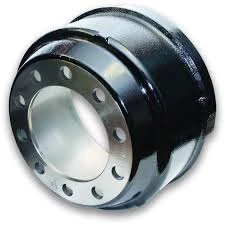Feb . 15, 2025 16:21
Back to list
drum brakes ev
In the rapidly evolving world of electric vehicles (EVs), the choice of braking systems plays a crucial role in ensuring safety and performance. Among the various braking systems, drum brakes have garnered attention due to their distinct advantages in certain applications. Understanding the nuances of drum brakes in EVs not only ensures a smoother ride but also provides insights into their integration with cutting-edge automotive technologies.
Real-world experience also underscores the durability of drum brakes. In fleet operations and rigorous testing scenarios, drum brakes have historically demonstrated superior longevity, outlasting many disc brake systems with less frequent need for replacement or service. For electric vehicle buyers, particularly those investing in commercial or high-mileage personal vehicles, this durability translates into lower long-term ownership costs. Authoritative studies highlight the suitability of drum brakes in electric vehicles designed for urban environments, where stop-and-go traffic is prevalent. The steady performance of drum brakes in such conditions is augmented by their ability to handle residual moisture without significant loss in braking efficiency. In cities with frequent rainfall or variable weather conditions, maintaining optimal braking performance is paramount for passenger safety. Furthermore, expert reviews and detailed technical assessments have recognized that drum brakes in certain EV applications can provide smoother and quieter braking performance. This attribute aligns with the overall driving experience enthusiasts have come to expect from electric vehicles, which are lauded for their near-silent operation. Therefore, for consumers seeking a serene and unobtrusive driving experience, vehicles equipped with modern drum brake systems may hold particular appeal. Trust in drum brake technology for EVs is bolstered by the consistent performance feedback from both industry insiders and the broader automotive community. Manufacturers that prioritize safety and reliability continue to invest in refining drum brake technology, ensuring that these systems meet rigorous modern standards. Through continuous innovation and adaptation, drum brakes maintain their relevance, proving that traditional technology can coexist fruitfully with new-era advancements. In conclusion, in the quest to optimize electric vehicles, drum brakes present a compelling case, offering unique advantages that enhance vehicle efficiency, reduce costs, and maintain high safety standards. Through thoughtful integration and continuous improvement, this tried-and-tested technology can effectively support the range of demands presented by modern electric vehicles, providing both manufacturers and consumers with a viable braking solution. Understanding and leveraging the benefits of drum brakes can make electric vehicles not only more efficient but also more affordable, reliable, and environmentally friendly.


Real-world experience also underscores the durability of drum brakes. In fleet operations and rigorous testing scenarios, drum brakes have historically demonstrated superior longevity, outlasting many disc brake systems with less frequent need for replacement or service. For electric vehicle buyers, particularly those investing in commercial or high-mileage personal vehicles, this durability translates into lower long-term ownership costs. Authoritative studies highlight the suitability of drum brakes in electric vehicles designed for urban environments, where stop-and-go traffic is prevalent. The steady performance of drum brakes in such conditions is augmented by their ability to handle residual moisture without significant loss in braking efficiency. In cities with frequent rainfall or variable weather conditions, maintaining optimal braking performance is paramount for passenger safety. Furthermore, expert reviews and detailed technical assessments have recognized that drum brakes in certain EV applications can provide smoother and quieter braking performance. This attribute aligns with the overall driving experience enthusiasts have come to expect from electric vehicles, which are lauded for their near-silent operation. Therefore, for consumers seeking a serene and unobtrusive driving experience, vehicles equipped with modern drum brake systems may hold particular appeal. Trust in drum brake technology for EVs is bolstered by the consistent performance feedback from both industry insiders and the broader automotive community. Manufacturers that prioritize safety and reliability continue to invest in refining drum brake technology, ensuring that these systems meet rigorous modern standards. Through continuous innovation and adaptation, drum brakes maintain their relevance, proving that traditional technology can coexist fruitfully with new-era advancements. In conclusion, in the quest to optimize electric vehicles, drum brakes present a compelling case, offering unique advantages that enhance vehicle efficiency, reduce costs, and maintain high safety standards. Through thoughtful integration and continuous improvement, this tried-and-tested technology can effectively support the range of demands presented by modern electric vehicles, providing both manufacturers and consumers with a viable braking solution. Understanding and leveraging the benefits of drum brakes can make electric vehicles not only more efficient but also more affordable, reliable, and environmentally friendly.
Prev:
Latest news
-
Brake Drums for Trucks | OEM-Grade, Factory DirectNewsNov.10,2025
-
High-Performance Brake Drums for Trucks | OEM & ISONewsNov.10,2025
-
Brake Drums Built to Last — OEM-Grade, Balanced for TrucksNewsNov.10,2025
-
Brake Drums for Trucks – OEM-Grade, Durable, Low NoiseNewsNov.10,2025
-
Brake Drums for Trucks | OEM, ISO-Certified, Fast DeliveryNewsNov.10,2025
-
Brake Drums: OEM-Grade, Precision Balanced, Factory DirectNewsNov.03,2025
-
Brake Drums: Heavy-Duty, OEM-Grade, Precision-BalancedNewsNov.03,2025


